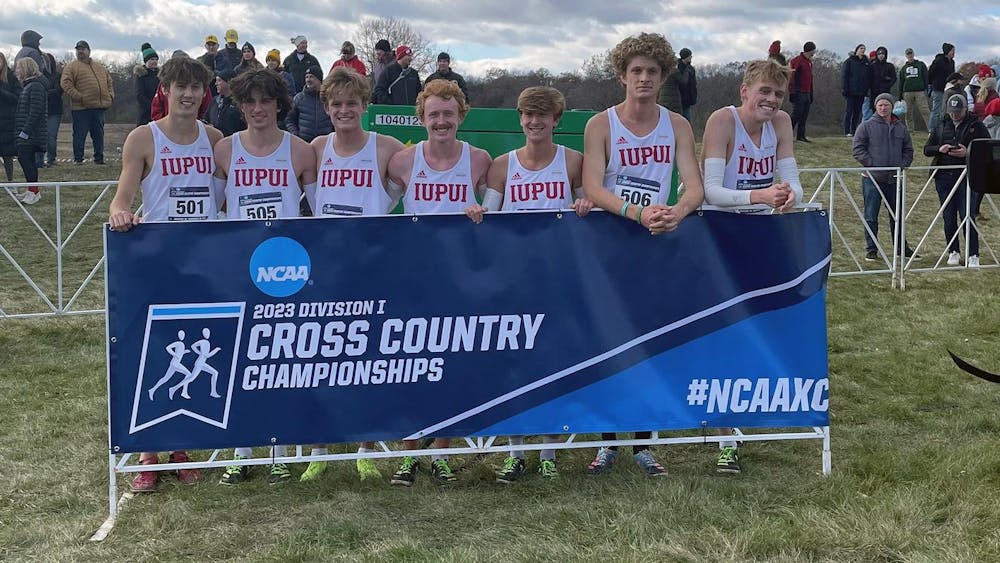IUPUI Men’s Cross Country coach Justin Roeder had a question he wanted answered- “What points in a cross-country race are most influential in predicting your final position?” IUPUI applied data science graduate student Kael Ecord was given the opportunity through the Sports Innovation Institute to help Roeder find an answer and he was not going to turn it down.
“Justin had a few ideas, which I thought sounded interesting. I personally have been running competitively for a long time and competed for Washburn University during my undergrad, so I also had a lot of knowledge about the sport,” said Ecord.
Roeder and Ecord wanted to focus on where the NCAA Great Lakes Regional meet was going to be held this year, which was Nuttycombe, Wisconsin, and look at races that had taken place on this course in the past to see how the team could best train for when they competed there.
Ecord started by looking at every race that has taken place on that course. Once he had a list of all the meets, he gathered results and then split the data. He was looking at times for each 2k split and how they impacted the placements for individual runners and the team combined scores. Ecord explained that this took the longest amount of time because timing companies have different ways to format results, so most of it was done manually himself on Excel.
Once he had the results for the individual splits, he wrote a program that would score the meet and return a list of each team’s scores at each split of the race. The program would then combine the split results from one meet together and spit out a new file with team scores at each split that were properly formatted.
The last step was taking all the files and put them into Tableau, which is a data visualization tool that detailed the place that each team held at different splits throughout the race. For 8k race finishes he focused on time splits for every 2k.. This visualization painted the full picture of how teams progressed and dropped throughout the race without having to just look at numbers on a results page. Doing this process helped come up with the best way to visualize the information so Roeder’s question could be answered.
Once there was visualization and research done, it was time to put all this into the team’s training. The team saw the numbers for where they were after 2,000 meters and looked at the likelihood of them staying in those positions, going up in placement, or staying where they were. The staff decided the way they were going to place the best was if they pushed right away and kept their lead the entire time. They had to take the early risk, which would cause pain earlier, but the guys would survive and then place higher.
Using all of Ecord’s data, the staff came up with new workouts that included new styles for the men to use in order to compete the best they could on the course. They also came up with different strategies for different weather and course conditions to make sure the runners were prepared. The workouts were intense and pushed the men, but the numbers were all the proof they needed to want the temporary pain.
The team ended up finishing eighth place, which is the best finish in program history. The team defeated some powerhouse teams including Youngstown State and Ohio State, two teams the Jags had previously lost to in the season.
“It is good to have data on our side,” said Roeder.
He explained that he was excited about continuing to use this data and study in the future on other courses as well so they can see how to compete better, especially if it is a course they do not compete on often. Roeder was continually shining the light on Ecord and all he did to help the team.
“I never would’ve thought I could go across campus, go up a few floors, and find someone to help us do something we have never done before,” said Roeder.





